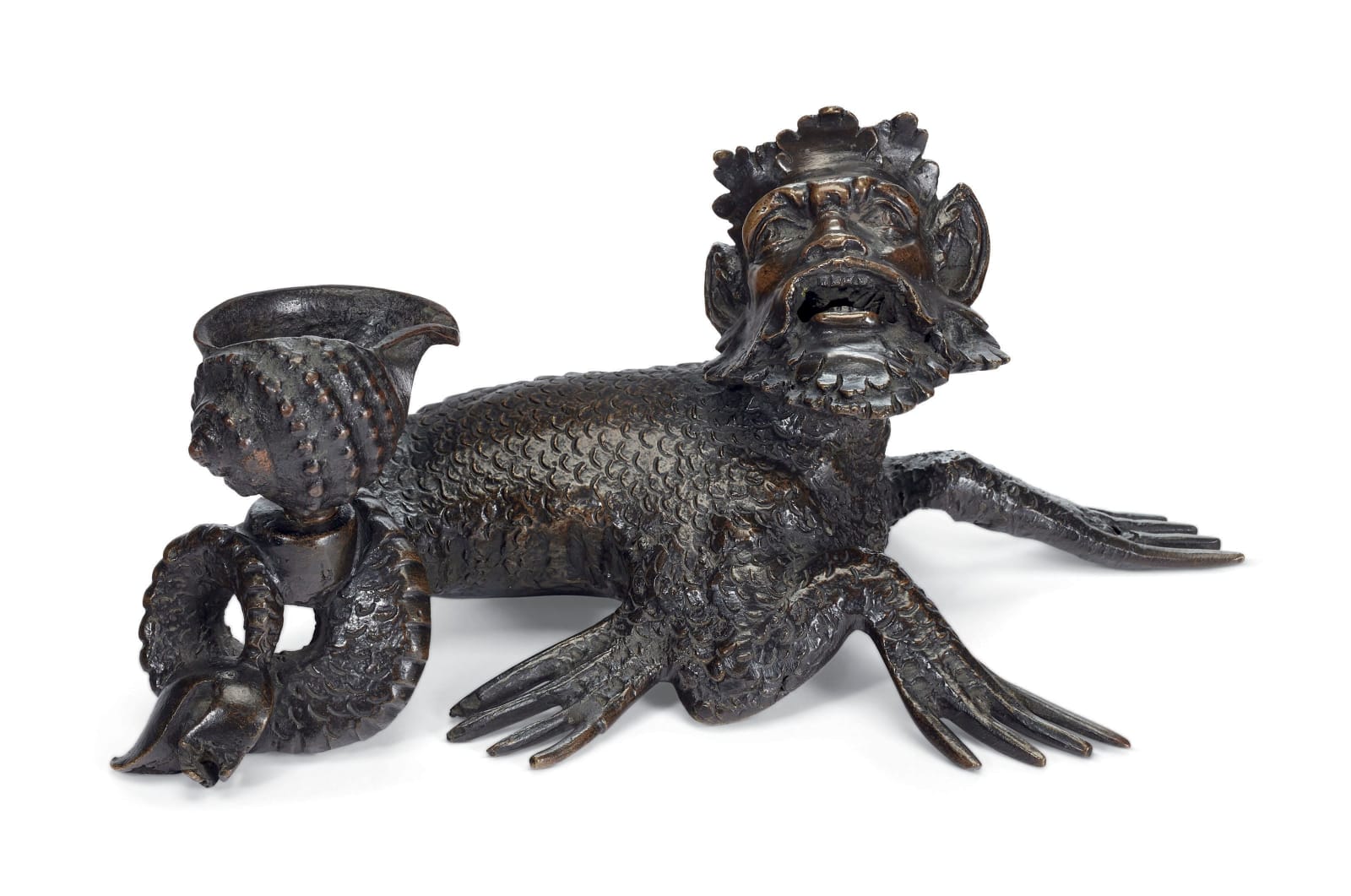Workshop of Severo da Ravenna (c. 1465/75–c. 1538)
This sea monster mounted as inkwell is a superb example of the thriving art market for small bronzes that existed in North Italy in the sixteenth century. Over a dozen surviving derivations of this subject have survived, with its curled fish tail, stretched fins and anthropomorphic face, many of them in renowned museum collections. The sea monster model highlights the popularity of utilitarian bronzes, which also included lamps and candlesticks and would have been sought after by collectors, satisfying at once practical needs and imagination.
While these bronzes were previously attributed to the unknown Master of the Dragon, a version in the Frick Collection signed O.SEVERI.RA made it clear that they were in fact from Severo da Ravenna and his workshop. The sea monsters, at times angry or anguished depending on the model, are thought to be inspired by Andrea Mantegna’s engravings of the Battle of the Sea Gods. The present version, while slightly bigger, is closely related to the signed sea monster in the Frick Collection. The carefully crafted details of the surface combined with its rich patina make this piece qualitatively superior to other known models.
Severo remains still today a mysterious artist, whose precise dates are not known. The first time his name appears dates back to 1496, and he is then referred to intermittently between 1496 and 1525. It is known that he was a preeminent Paduan sculptor of the early sixteenth century, even though only one signed work remains in Padua, a life-size marble of St. John the Baptist above the entrance of the Capella del Santo, documented to 1500-1502. He is predominantly known for his production of small decorative objects, amongst which his bronzes were particularly popular.
Provenance
Sotheby’s, London, 23 March 1971, lot 96
Abbott-Guggenheim Collection
Their sale, Christie’s, New York, 1 May 2019, lot 264
Private collection, New York
Exhibitions
E. van Binnebeke, Beeldhouwkunst, 1500-1800 in de collectie van het Museum Boymans-van Beuningen, Rotterdam 1994, pp. 50-51, no. 4
M. Schwartz, ed., European Sculpture from the Abbott Guggenheim Collection, New York, 2008, pp. 40-41, no. 13
Literature
San Francisco, The Fine Arts Museums of San Francisco, Renaissance and Baroque Bronzes from the Abbott Guggenheim Collection, 3 March-11 September 1988, L. Camins, ed., pp. 17-19, no. 2
